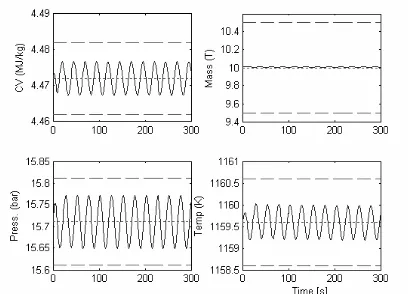Figure 8. Process response to sinusoidal pressure disturbance at 50% load
5. CONCLUSIONS
A systematic method for assessing the disturbance rejection performance of different control structures for the ALSTOM gasifier using GRDG is presented in this paper. The analysis is based on the transfer function model identified from the simulated process operation data based on the nonlinear simulation programme. The OE method is used in identifying process models because it can lead to models with good long range prediction (simulation) performance and, hence, accurate transfer function models. It is shown that Scheme 4 is the most favoured control structure among the 4 control structures considered. Simulation results confirm this finding. Studies in this paper also indicate that using RGA analysis is not effective in control structure selection for this benchmark process. It would be possible to find even better control structures using GRDG analysis and this is under further investigation.
ACKNOWLEDGMENT
This work was supported by Technological and Professional Skills Development Sector Project (TPSDP) – ADB Loan No.1792 – INO. This support is gratefully acknowledged.
REFERENCES
Asmar, B. N., Jones, W. E., and Wilson, J. A. (2000). A process engineering approach to the ALSTOM gasifier problem. Proceedings of the Institution of Mechanical Engineers Part I-Journal of Systems and Control Engineering, v. 214, no. 16, p. 441-452. Bristol, E. (1966). On a new measure of interaction
for multivariable process control. IEEE Transaction on Automaatic Control, v. 11,
no. 1, p. 133-134.
Burnham, K., Young, P., and Dixon, R. (2000). Special issue on the ALSTOM gasifier control engineering benchmark challenge. Proceedings of the Institution of Mechanical Engineers Part I-Journal of Systems and Control Engineering, v. 214, no. 16, p. I-II.
Chang, J. W., and Yu, C. C. (1992). Relative Disturbance Gain Array. Aiche Journal, v. 38, no. 4, p. 521-534.
Dixon, R., and Pike, A. W. (2004). Introduction to the 2nd ALSTOM benchmark challenge on gasifier control, in Control 2004, Bath, UK. Dixon, R., Pike, A. W., and Donne, M. S. (2000).
The ALSTOM benchmark challenge on gasifier control. Proceedings of the Institution of Mechanical Engineers Part I-Journal of Systems and Control Engineering,
v. 214, no. 16, p. 389-394.
Griffin, I. A., Schroder, P., Chipperfield, A. J., and Fleming, P. J. (2000). Multi-objective optimization approach to the ALSTOM gasifier problem. Proceedings of the Institution of Mechanical Engineers Part I-Journal of Systems and Control Engineering,
v. 214, no. 16, p. 453-468.
Liu, G. P., Dixon, R., and Daley, S. (2000). Multi-objective optimal-tuning proportional-integral controller design for the ALSTOM gasifier problem. Proceedings of the Institution of Mechanical Engineers Part I-Journal of Systems and Control Engineering,
v. 214, no. 16, p. 395-404.
Munro, N., Edmunds, J. M., Kontogiannis, E., and Impram, S. T. (2000). A sequential loop closing approach to the ALSTOM gasifies problem. Proceedings of the Institution of Mechanical Engineers Part I-Journal of Systems and Control Engineering, v. 214, no. 16, p. 427-439.
Rice, M. J., Rossiter, J. A., and Schuurmans, J. (2000). An advanced predictive control approach to the ALSTOM gasifier problem. Proceedings of the Institution of Mechanical Engineers Part I-Journal of Systems and Control Engineering, v. 214, no. 16, p. 405-413.
Stanley, G., Marinogalarraga, M., and McAvoy, T. J. (1985). Shortcut Operability Analysis .1. The Relative Disturbance Gain. Industrial & Engineering Chemistry Process Design and Development, v. 24, no. 4, p. 1181-1188. Taylor, C. J., McCabe, A. P., Young, P. C., and
Chotai, A. (2000). Proportional-integral-plus (PIP) control of the ALSTOM gasifier problem. Proceedings of the Institution of Mechanical Engineers Part I-Journal of Systems and Control Engineering, v. 214,
